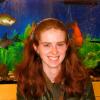Abstract
Responses to sounds are highly dynamic, adapting to changing environmental or cognitive demands both over long and short timescales. An essential locus of this flexibility is the auditory cortex. We combine in vivo and in vitro recordings with computational models to address two questions: How do interactions between the numerous cortical cell types support adaptive changes in sound processing? And what aspects of these interactions are conserved, versus specialized, in the various species used to model human auditory function?
Biography
Andrea Hasenstaub, PhD, is an Assistant Professor in the Coleman Memorial Laboratories in the Department of Otolaryngology-Head and Neck Surgery (OHNS) at the University of California, San Francisco. She received her BS in Mathematics and Engineering at the California Institute of Technology in Pasadena, California; a M.Phil. in Biological Anthropology from Cambridge University, England; and a PhD in Neurobiology at Yale University in New Haven, Connecticut, followed by a fellowship at the Salk Institute in La Jolla, California.
